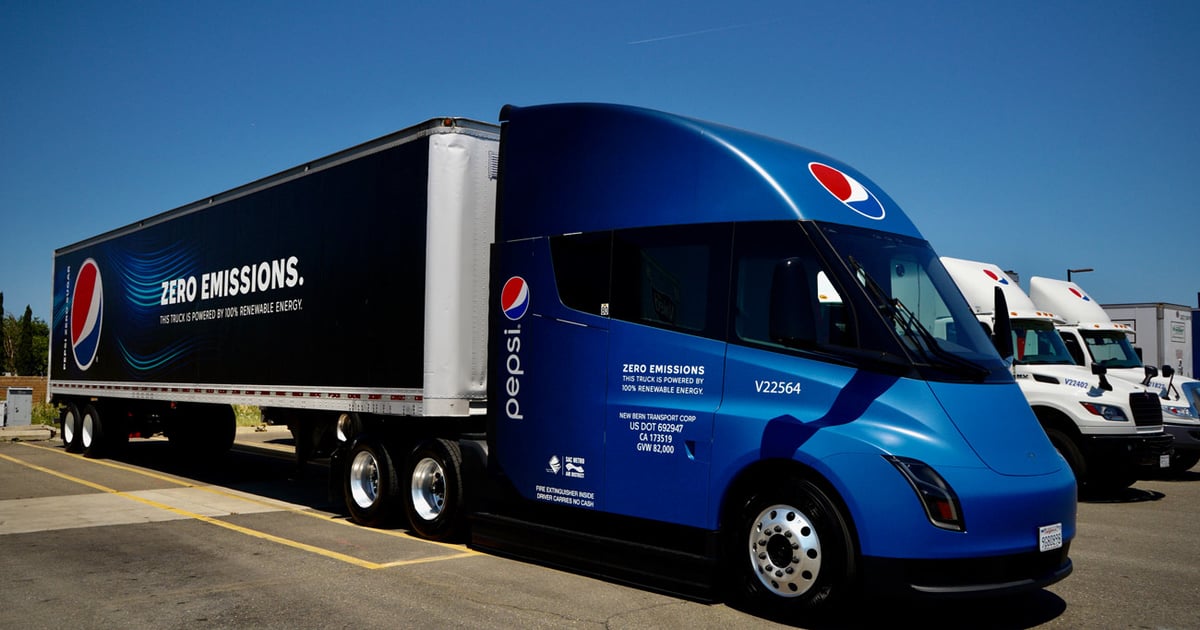
A first look at the real-world performance of the Tesla Semi next week could signal the disruption of a sector defined by stability and century-long relationships — if Tesla lives up to the hype.
The North American Council for Freight Efficiency is hosting its “Run on Less – Electric DEPOT,” a major event for the commercial trucking industry. The virtual showcase will track information on charging infrastructure, cost of ownership, truck performance, charge management and other metrics for three weeks. Those following the showcase will be able to track performance as vehicles equipped with monitoring tools zoom across the North American continent fulfilling actual orders on real routes.
This is the first year that a Tesla Semi will be participating in the event, which began in 2017, and all eyes will be on the automaker to evaluate whether it can enter an established market with brands that have been around “since God was a boy,” said Oliver Dixon, a senior analyst for heavy trucks at Guidehouse Insights.
“For Tesla to basically get into the market, it’s going to have to displace a long-term competitor which, in a mature market, is very difficult to do,” he said. “It’s got to prove 130 percent as opposed to 100 percent to actually get there.”
PepsiCo’s Teslas from Sacramento, Calif., make up one of 10 fleets participating in this year’s event, which is focused on sharing information about scaling electric vehicle fleets at depots. Other participants include Schneider in South El Monte, Calif., Frito-Lay in Queens, N.Y., and Purolator in Richmond, British Columbia.
This event is the fourth in the Run on Less series. Past events have focused on long-haul routes, regional haul applications and general electric truck performance.
From Sept. 11 through 30, a virtual dashboard will monitor 21 trucks installed with tracking equipment that will show miles driven, types of deliveries made and their states of charge at different points throughout the day.
This year’s event will also measure the amount of electricity the different sites needed to power the trucks. Modeling tools will be used to predict how much power would be required if all the trucks operating at a site were electric.
“A lot of people will be watching that Tesla Semi not by the day, maybe by the hour — are they getting the 400 or 500 miles that Musk said?” said Mike Roeth, executive director of the North American Council for Freight Efficiency. “I’m really proud that we’re able to do this. This is information that a lot of these companies consider pretty confidential and private, and it’s a fine line we walk in sharing what they see as stewardship for the industry.”
Tesla estimates a 500-mile range for its Semi, roughly double the longest estimated range of the Freightliner eCascadia.
PepsiCo uses the majority of its 21 Tesla Semis for short-range deliveries — 100 miles or less — with several stops, for up to 12 hours each day.
“This is going to revolutionize how the trucking industry goes to market in the future and PepsiCo’s on the forefront of it,” said Charles Burton, director of fleet operations at PepsiCo Beverages North America’s west division in a video promoting the event.
Range and charging infrastructure remain two pressing challenges for long-haul trucking. For firms that make money hauling as many goods as possible in as short a period as possible, heavy batteries and long charging times can be a stubborn impediment to wide adoption.
Company leaders such as John O’Leary, Daimler North America’s CEO, have articulated frustration over bottlenecks as freight owners wait for electrical service and charger installation — sometimes for years.
There is also a two- to three-year back order for the switch gear necessary for utilities to extend power to sites.
“We’ve had people say, ‘Hey, we love the five that we took delivery of, and if we had a way to charge them, we would take 200 more,’ ” O’Leary said of the Freightliner eCascadia electric Class 8 tractor at the Advanced Clean Transportation Expo in May.
Even if Tesla’s longer-range promises live up to expectations, the company will have to prove it can provide service — a nonnegotiable for trucks carrying heavy freight up and down mountains and in the summer in Arizona and the winter in Minnesota.
Fleet owners are not just looking at sticker price and range. Another “huge” thing that goes into the purchase decision is after-sales support, said Guidehouse’s Dixon.
“If you’ve got $250,000 worth of fresh fish on a reefer trailer” stuck “at the side of the road in Sacramento in August, that’s going to become a problem really, really quickly,” he said. “So this is another question which really needs to be answered.”

